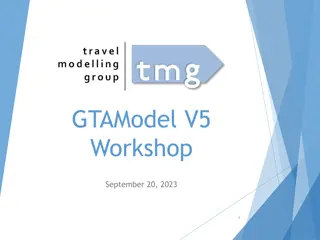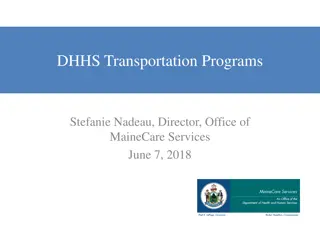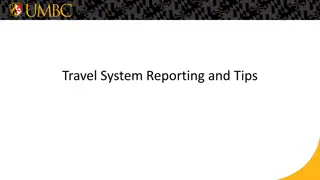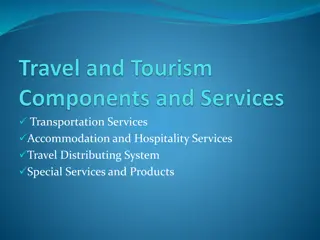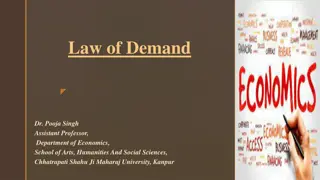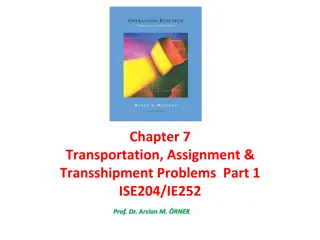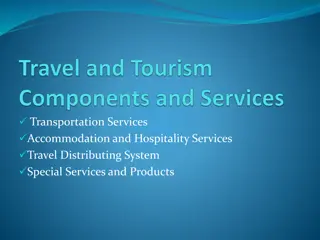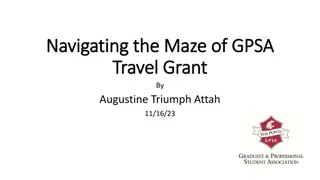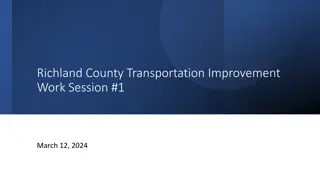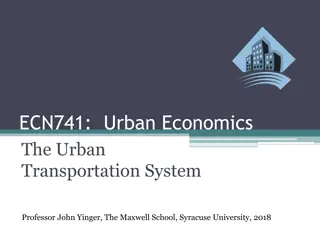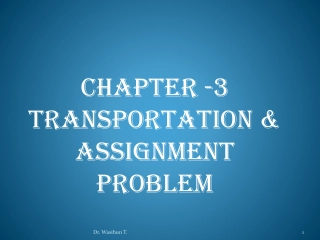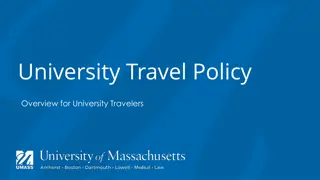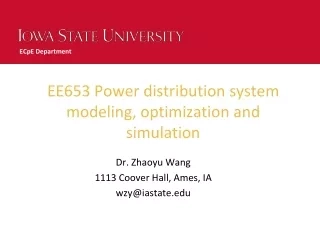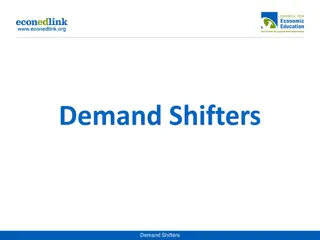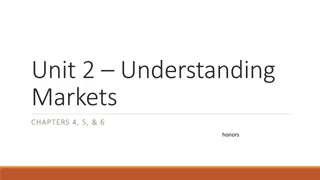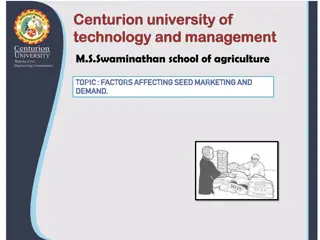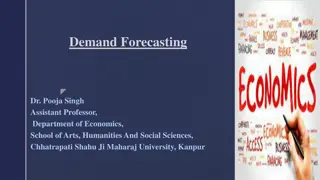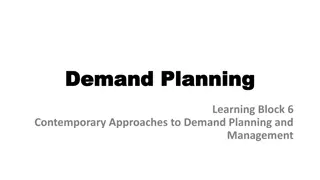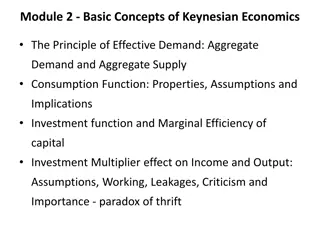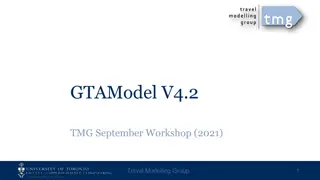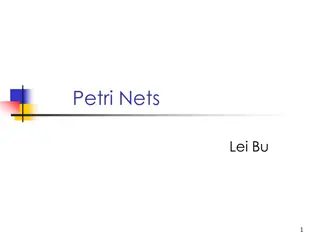Travel Demand Modeling in Transportation Engineering
Travel demand modeling (TDM) is crucial for estimating future travel demand based on assumptions like traffic volume. It helps evaluate roadway improvements, bus services, manage congestion, and estimate pollution emissions. Factors influencing travel demand include land use, population characteristics, and transportation availability. Study areas are defined by dividing zones with homogeneous characteristics. Sequential steps in travel forecasting involve trip generation, distribution, mode choice, and assignment using 4-step models.
- Travel Demand Modeling
- Transportation Engineering
- Traffic Volume
- Roadway Improvements
- Congestion Management
Download Presentation

Please find below an Image/Link to download the presentation.
The content on the website is provided AS IS for your information and personal use only. It may not be sold, licensed, or shared on other websites without obtaining consent from the author. Download presentation by click this link. If you encounter any issues during the download, it is possible that the publisher has removed the file from their server.
E N D
Presentation Transcript
CE 34500 Transportation Engineering Chapter 12: Forecasting Travel Demand 1
What is Travel Demand Modeling (TDM) Estimate travel demand for a specific future time frame (20 to 30 years) based on a number of assumptions. Traffic Volume (AADT)? 2
Why Travel Demand Modeling? Primarily used for evaluating Roadway improvements, Improvements to bus service, Pollution emission estimates, Congestion management. 3
Factors Influencing Travel Demand 1.Location and Intensity of Land Use 2.Socioeconomic Characteristics of the Population 3.Extent, Cost, and Quality of the available Transportation
Defining Study Area Delineate boundaries of study area and subdivide into zones Zones Should Have Following Characteristics Homogeneous Socioeconomic Characteristics Intra-zonal Trips Should Be Minimized Use Physical, Political, and Historical Boundaries if Possible Zones Should Not Be Created Within Other Zones The Zone System Should Generate and Attract Approximately Equal Trips, Households, Population, or Area Use Census Tract Boundaries Where Possible
Sequential Steps for Travel Forecasting Travel Demand Modeling (4-step models) 1. Trip Generation 2. Trip Distribution 3. Mode Choice 4. Trip Assignment 7
4-step Models 1. Trip Generation: How many people travel? 2. Trip Distribution: What are the travel patterns for the study area? 3. Mode Choice: What travel modes are used? 4. Trip Assignment: What trip paths will be followed through the transportation network? 8
Examples of 4-steps Models Trip Generation Mode Choice Zone Trip Zone Trip Mode 1 Mode 2 Attractions Productions 1 2 3 1 2 3 Traffic Assignment Trip Distribution 1 2 3 Route 1 Route 2 Route 3 1 2 3 9
Trip Generation Process for determining the number of trips that will begin and end in each traffic zone. Trips determined without regard to destination
Define Trip Production and Attraction 11
TAZ 1 TAZ 6 Home Work A worker leaves TAZ 1 in the morning to go to work in TAZ 6. In the evening, same worker comes back TAZ 1. How many trips?
Example 13
Step 1: Trip Generation Trip Production Modeling Techniques: Regression Techniques Cross Classification (or category) Analysis. Trip attraction models 14
Example 12.1: Trip Generation HH Number 1 2 3 4 5 6 7 8 9 10 11 12 13 14 15 16 17 18 19 20 Trips per HH 2 4 10 5 5 15 7 4 6 13 8 6 9 11 10 11 12 8 8 6 HH Income ($1000s) 16 24 68 44 18 68 38 36 28 76 72 32 28 44 44 52 60 44 52 28 Cars/HH 0 0 2 0 1 3 1 0 1 3 1 1 2 2 2 2 2 1 1 1
Example 12.2 Cross Classification Determine the number of trips per day generated for each trip purpose. Number of dwelling units: 60 Average income per dwelling unit: $44,000 Income ($) Low (under 32,000) Medium (32,000 48,000) High (over 48,000) Households 9 40 51
Example 12.3 Trip Attraction Employed at a downtown commercial center are 650 non-retail and 220 retail workers. Determine the number of trips per day attracted to this zone.
Balancing Productions and Attractions fa = Pi/ A = 600/800 = 0.75 Source: Traffic & Highway Engineering, Garber & Hoel 19





